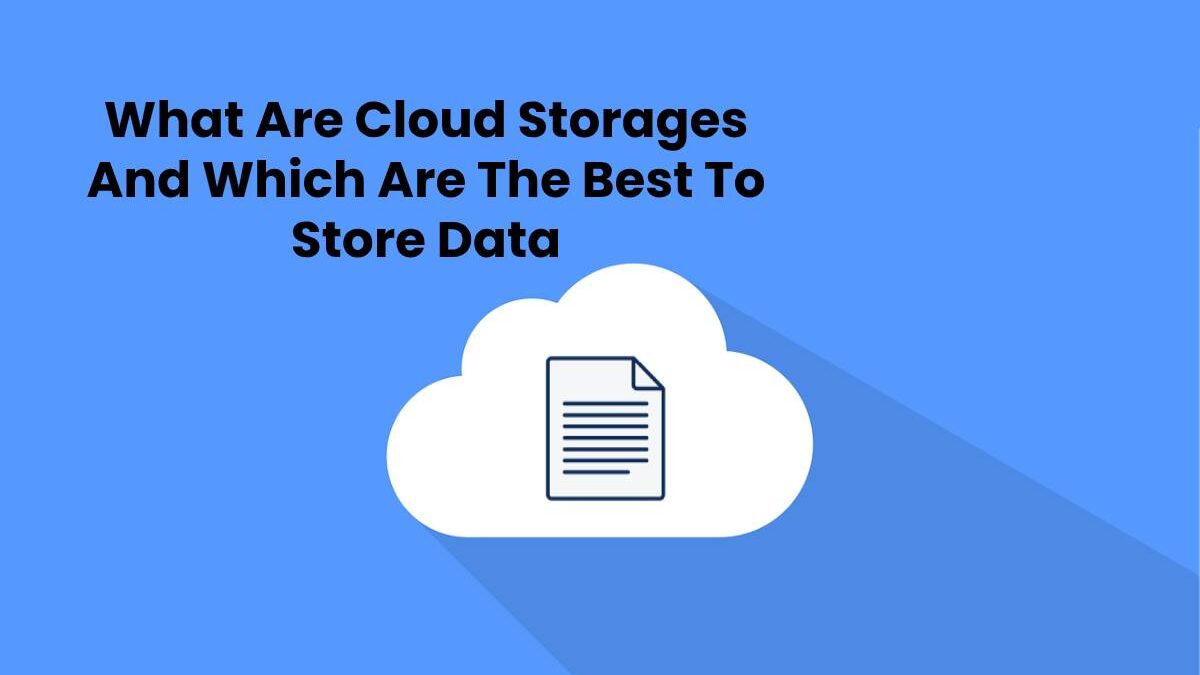Every business regardless of its size generates huge amounts of data every day. Data is one of the most important business assets, that is why it is essential to understand how and where to store it so that not to lose any valuable information. In this article, we discuss which data is better for storing in the cloud and which type of cloud storage to choose.
Table of Contents
What is Cloud Storage
The problem of data storage is not new. Before the clouds appeared, it was resolved by buying more and more servers. It is not an easy task – you have to order the equipment, wait for its delivery, configure and put it into operation. Moreover, servers and hard drives tend to fail – all equipment needs regular monitoring. In addition, you need to do backups from each storage so that nothing to lose.
With the emergence of cloud technologies, data storage turned into cloud service. Now companies do not need to buy servers and hard drives, equip data centers and hire staff to maintain it – cloud provider buys all the necessary hardware at once and installs a reliable storage system in its data center. Everyone can buy or lease storage capacity for their data. That is cloud storage – practically unlimited virtual disk, in which free space is allocated to your needs.
Cloud service provider assumes all tasks related to the infrastructure maintenance – manages hardware and software, changes failed servers, give tasks to administrators, monitors backups and solves other issues related to data storage.
Cloud storage is an online storage model in which data is stored on multiple servers distributed over a network. Such storage is provided on demand in the necessary amount, eliminating the need to purchase and maintain their own infrastructure for data storage. Cloud storage provides scalability, reliability and availability of data from any location at any time.
Storage capacity is not the only advantage of cloud storage. It is also worth taking into account:
- The speed of information exchange (upload/download of files) between the client’s local servers and cloud storage.
- Maximum volume of transferred files (usually from 5 Gb to 5 Tb).
- Level of security of transmitted and stored data.
- Integration and compatibility of cloud storage with various software and hardware platforms, databases (relational, NoSQL), as well as support for various protocols (OpenStack Swift, Amazon S3, RBD).
Types of Cloud Storages
Cloud File Storage
The most familiar and popular type. A file uploaded to the cloud is given a name; it receives metadata, and then placed in a directory. It uses a hierarchical directory structure that all Windows users are used to.
File storages are well suited for dealing with small amounts of data. They are also convenient for collaboration, when team is working together on a single project. Here is an example: Dropbox, Google cloud. At the same time, file storages are inexpensive, which increases their attractiveness.
Block Storage
This type of storage is used for processing huge data sets, requiring complex calculations; for hosting ERP systems, or frequently overwritten data. Block storage can be used by any operating system, and unlike a file storage that only supports a particular file system, it can be configured to store any data you need.
In block storages, loaded data is divided into several pieces (blocks) of the same size and then is written to disk. This solution is often used in virtualization. Each virtual server gets its own separate storage, which guarantees high performance. Block storages are convenient for both users and applications as they offer low latency and easy access rights settings.
Object storage
Data is stored as objects. Object storage has no hierarchy, HTTP API is used for storage and retrieval. This type provides extensive metadata storage capabilities and allows for easy scaling. Object storage is essential for importing unstructured data (e.g., media files and web materials) from other storages for analytics, data migration, backup, archiving. It is also inexpensive, does not require planning of the storage volume. This type of storage allows managing the storage time and limits and the number of HTTP requests is not limited. Fees are charged only for data storage and downloading.
How to use cloud storage and which type is better
First you need to understand what data you will store and in what format. Talk to your engineers and system administrator or ask your provider. After that, you need to decide on how to use the cloud – what and where is stored, who has access to certain data, how to arrange a system for storing versions and backups and so on.
When the amount of data is small, but needs to be available to multiple people, you can use cloud file storage. This is the most affordable option for small projects. Due to its size and lack of configurations to meet business needs, file storage is not suitable for companies. With large amounts of data, which companies operate, it is better to use object storage like S3.
Finally, you can start working and monitor the amount of data in the cloud. If there is not enough space, just buy or lease more from the provider or set up automatic scaling to get resources as soon as they are needed. This is much easier than maintaining your own infrastructure.

